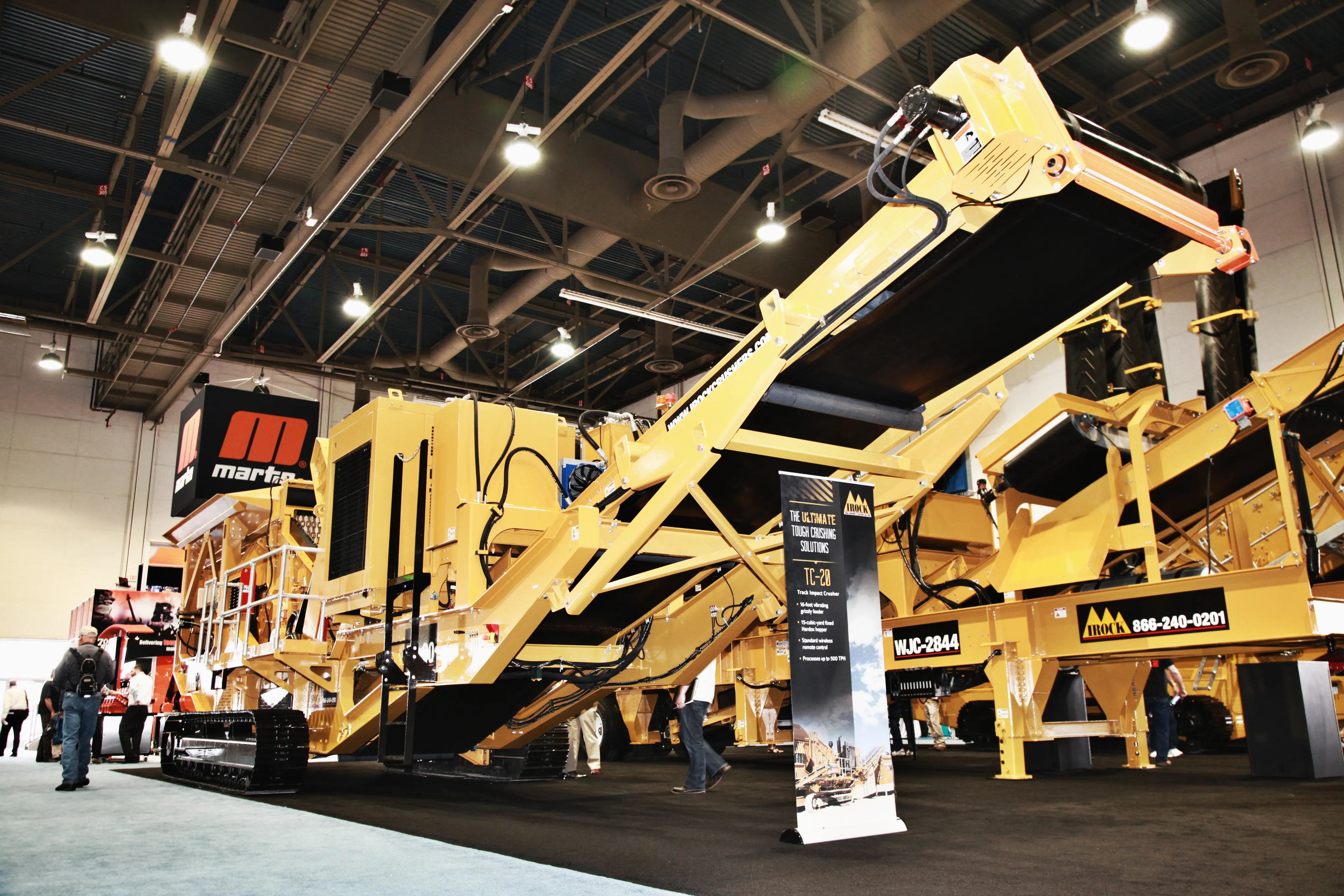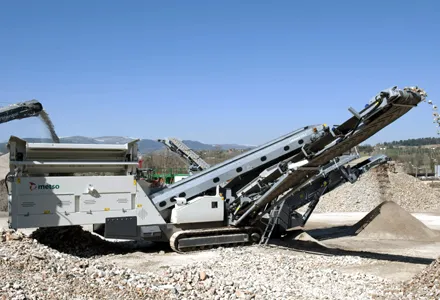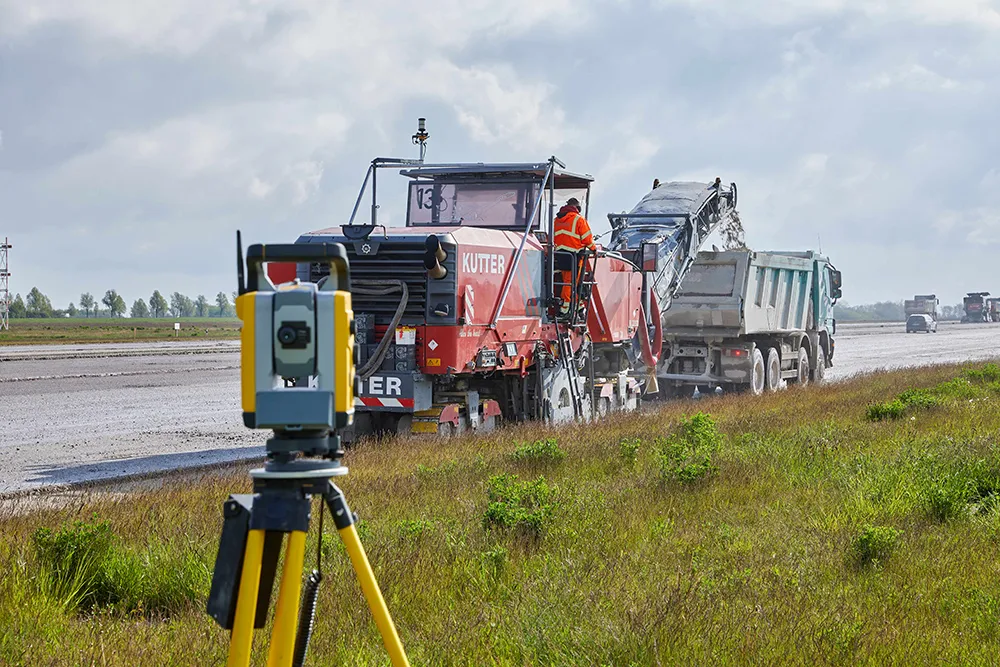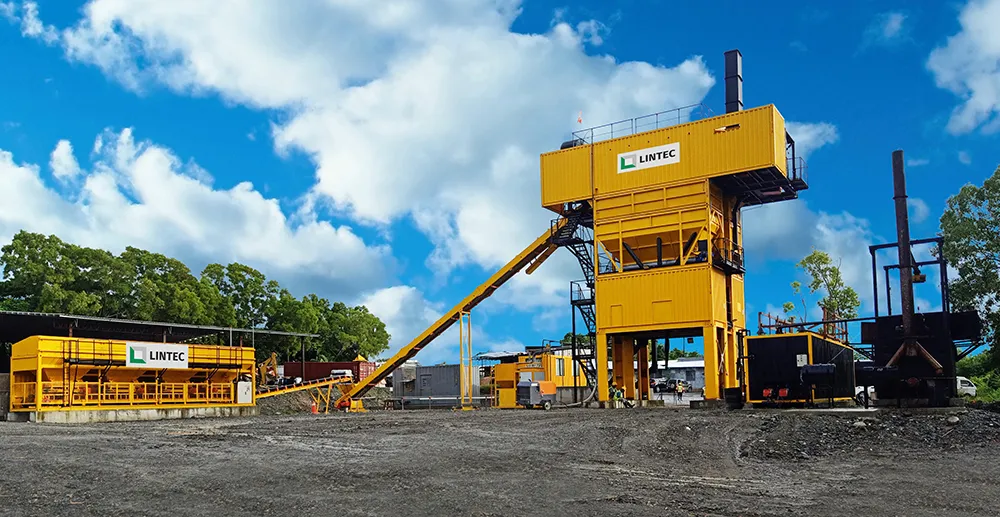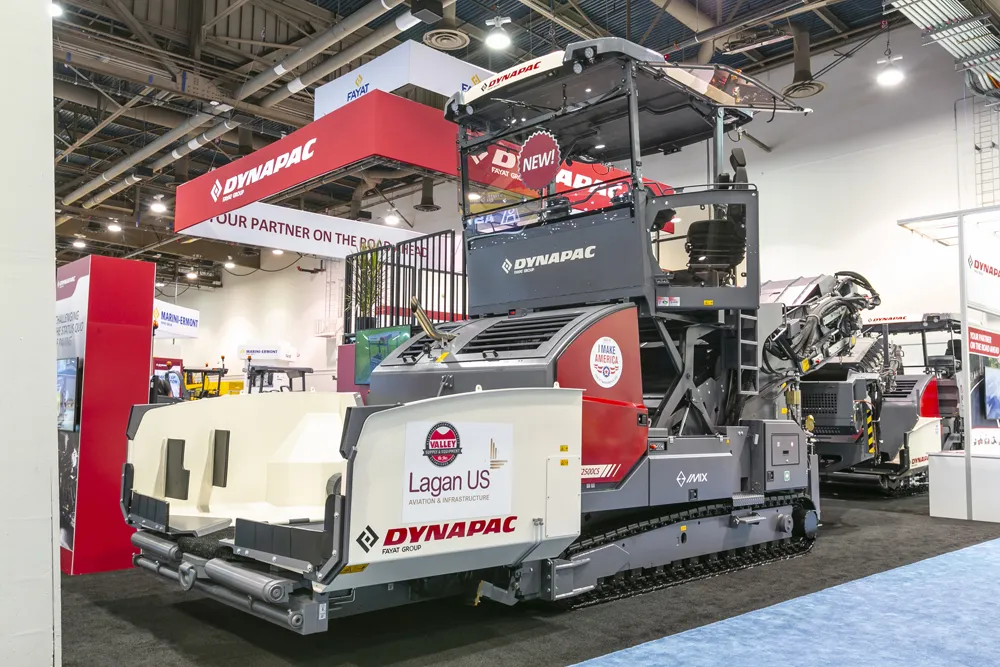
The material transfer vehicle (MTV) plays an important role in asphalt paving operations. This machine provides a capacity buffer between the asphalt supply trucks and the asphalt paver, ensuring a constant flow of mix. Ever since Roadtec introduced its Shuttle Buggy in the late 1980s, road builders have had an important tool in improving asphalt surface quality. The MTV’s primary purpose is in providing a buffer for the asphalt paving process in between the supply trucks and the paver. As one truck finishes tipping its load and drives off, the next manoeuvres into position and then begins tipping. Where the trucks tip directly into the asphalt paver, this can result in a discontinuous feed of material through to the screed, with serious issues for mat quality. In addition, material and heat segregation can result in the last quantity of asphalt being tipped from the truck having a different (size and/or heat) consistency from the rest of the mix. This last issue can result in ‘truck bumps’ on the paved surface, quantities of wearing course mix that are harder to compact, leaving a bump on the roadway that drivers will be able to detect after construction is complete.
Using an MTV prevents that discontinuous material flow and also reduces the problems of size and heat segregation of the mix.
Other firms, seeing the success of Roadtec’s Shuttle Buggy, followed suit with their own machines aimed at the same market segment. Customers now have a choice of machines from suppliers such as BOMAG, Dynapac, Vögele and Weiler, in addition to Roadtec.
The units from BOMAG, Dynapac, Vögele are all tracked, while Weiler’s model is wheeled. Only Roadtec currently offers the option of both wheeled and tracked machines, with a range including the wheeled MTV-1100e/ex, tracked MTV-1105e/ex, wheeled SB-1500e/ex, SB-2500e/ex and its new SB-3000. A key feature of the Shuttle Buggy is its internal auger system, which provides a remixing capability that is said to further minimise the risk of heat or material segregation in the mix. Only some of the competing machines have featured a similar remixing capability.
Dynapac has introduced an improved version of its tracked MF2500CS MTV, a machine that shares much of its running gear and chassis configuration with the firm’s pavers. A key change for Dynapac and its newly upgraded MTV design is that this now has a remix capability. The company has developed its IMIX system to eliminate both material segregation and heat segregation in the mix.
According to Dynapac, the MF2500CS feeder offers high productivity as it allows a throughput of up to 4,000tonnes/hour. The machine is also said to be versatile as it can be used for multiple materials. Its versatility is further increased by the machine’s newly developed SW6500 swing app conveyor. This provides a long side reach while paving over barriers and inline or echelon paving applications. The moveable conveyor is said to be fast to attach and also dismount from the MF2500CS. This is due to its novel attachment system, which allows the conveyor to be fitted or removed by two personnel in just 10 minutes. According to Dynapac, the fast detachment capability means that the Swing App system can be used on different MTVs in a contractor’s fleet as required, reducing overall cost. Another additional benefit of the MF2500CS model is that it offers high working efficiency and a fuel consumption around 70% lower than for competing MTVs, according to Dynapac. It also features significantly fewer wear parts, helping to lower maintenance needs and costs. Of note is the similarity between the Dynapac and BOMAG MTV models, which share a common history. And BOMAG says that it will be introducing the BOMAG-badged variant of the upgraded MTV design in due course, which will share the same specifications.
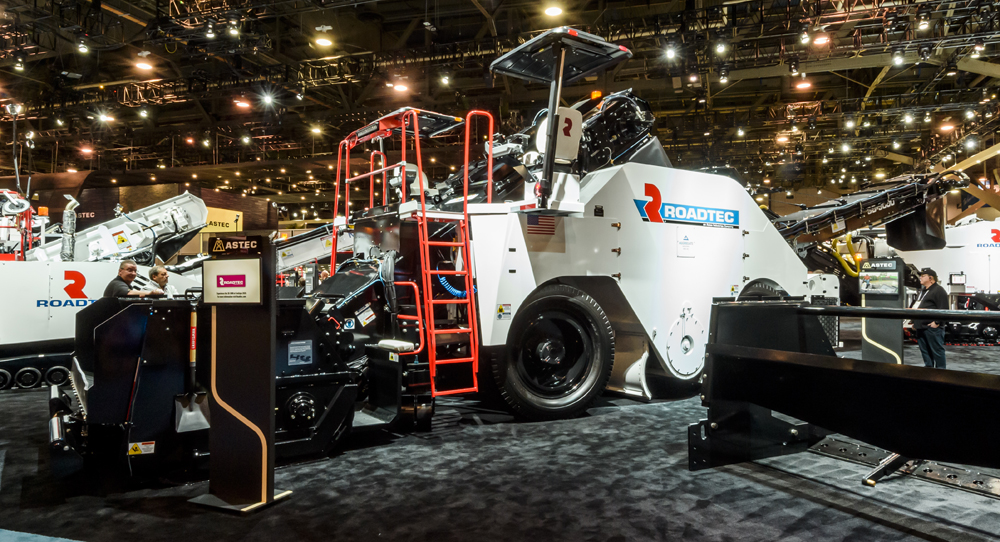
Meanwhile, Roadtec says that it is now offering an improved version of its Shuttle Buggy. The new SB3000 model replaces the earlier SB2500, with its capacity increased up to 27tonnes. High efficiency and performance is claimed due to its high power output and increased capacity.
A spokesperson for the firm said, “We spoke to customers and there were three key areas we needed to improve; user experience and safety, transportability and jobsite performance.”
The company said it was keen to ensure it retained its market leading position for material transfer vehicles (MTVs), aware that there are more competitors in this segment and that the rival machines have been improved significantly in recent times. The engine is now mounted at ground level, which allows better access for maintenance. Power comes from a Cummins B6.7 diesel rated at 231kW and which meets the Tier 4 Final/Stage V emissions requirements. However, this new location for the diesel was not a straightforward move and the spokesperson commented, “Getting the engine at ground level was a big challenge.”
Another major change is with the operator position, which has been relocated as far to the right as possible, while still retaining a good all-round view. Two control stations are fitted on top of the machine now, one on either side so that the operator has a choice to best suit the working conditions. Meanwhile, the ground operator also has the safety benefit of a protected seat mounted on the chassis, instead of having to walk beside the machine during paving where there may be live traffic.
The machine’s crucial remixing capability remains, “…but we’ve done a much better job of matching torque, auger size and material flow to maximise wear life,” said the spokesperson.
The machine’s material handling system has been upgraded, helping to optimise material flow, while it has a new and more efficient speed control system. An infrared sensor is now fitted instead of the sonic sensor used previously and the firm says that this combines with the new speed control system to allow the machine to follow the paver more closely.
Manoeuvrability has also gained due to the addition of a four-wheel steer capability, allowing the machine to turn in tighter spaces. Another upgrade comes in the shape of the hydraulic chain tensioner for its material transport chains, eliminating the need for a maintenance task that is sometimes overlooked. Other features of the new model include efficient lighting, which allows the machine to be operated at night, as well as CCTV equipment ensuring good all-round visibility for the operator, maximising safety.


